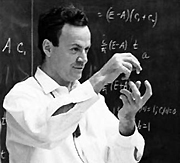Showing posts with label Nanotechnology. Show all posts
Showing posts with label Nanotechnology. Show all posts
Thursday, May 4
Graphene-Based Quantum Circuits
Imagine having a building made of stacks of bricks connected by adaptable bridges. You pull a knob that modifies the bridges and the building changes functionality. Wouldn't it be great?
A team of researchers led by Prof. Aitor Mugarza, from the Catalan Institute of Nanoscience and Nanotechnology (ICN2) and ICREA, together with Prof. Diego Peña from the Center for Research in Biological Chemistry and Molecular Materials of the University of Santiago de Campostela (CiQUS-USC), Dr. Cesar Moreno, formerly a member of ICN2's team and currently a researcher at the University of Cantabria, and Dr. Aran Garcia-Lekue, from the Donostia International Physics Center (DIPC) and Ikerbasque Foundation, has done something analogous, but at the single-atom scale, with the aim of synthesizing new carbon-based materials with tunable properties.
As explained in a paper just published in the Journal of the American Chemical Society (JACS) and featured on the cover of the issue, this research is a significant breakthrough in the precise engineering of atomic-thin materials —called "2D materials" due to their reduced dimensionality. The proposed fabrication technique opens exciting new possibilities for materials science, and, in particular, for application in advanced electronics and future solutions for sustainable energy.
The authors of this study synthesized a new nanoporous graphene structure by connecting ultra-narrow graphene strips, known as "nanoribbons", by means of flexible "bridges" made of phenylene moieties (which are portions of larger molecules).
By modifying in a continuous way the architecture and angle of these bridges, the scientists can control the quantum connectivity between the nanoribbon channels and, ultimately, fine-tune the electronic properties of the graphene nanoarchitecture. The tunability could also be controlled by external stimuli, such as strain or electric fields, providing opportunities for different applications.
These ground-breaking findings, resulting from a collaboration between top-tier Spanish institutions (CiQUS, ICN2, University of Cantabria, DIPC) and the Technical University of Denmark (DTU), shows that the proposed molecular bridge strategy can have a great impact on the synthesis of new materials with tailored properties and is a powerful tool for the realization of quantum circuits. READ MORE...
Wednesday, February 8
Nanotechnology

Physicist Richard Feynman, the father of nanotechnology.
Nanotechnology is science, engineering, and technology conducted at the nanoscale, which is about 1 to 100 nanometers.
Nanoscience and nanotechnology are the study and application of extremely small things and can be used across all the other science fields, such as chemistry, biology, physics, materials science, and engineering.
Nanoscience and nanotechnology are the study and application of extremely small things and can be used across all the other science fields, such as chemistry, biology, physics, materials science, and engineering.
How It Started
The ideas and concepts behind nanoscience and nanotechnology started with a talk entitled “There’s Plenty of Room at the Bottom” by physicist Richard Feynman at an American Physical Society meeting at the California Institute of Technology (CalTech) on December 29, 1959, long before the term nanotechnology was used. In his talk, Feynman described a process in which scientists would be able to manipulate and control individual atoms and molecules. Over a decade later, in his explorations of ultraprecision machining, Professor Norio Taniguchi coined the term nanotechnology. It wasn't until 1981, with the development of the scanning tunneling microscope that could "see" individual atoms, that modern nanotechnology began.
Fundamental Concepts in Nanoscience and Nanotechnology
It’s hard to imagine just how small nanotechnology is. One nanometer is a billionth of a meter, or 10-9 of a meter. Here are a few illustrative examples:There are 25,400,000 nanometers in an inch
A sheet of newspaper is about 100,000 nanometers thick
On a comparative scale, if a marble were a nanometer, then one meter would be the size of the Earth
Nanoscience and nanotechnology involve the ability to see and to control individual atoms and molecules. Everything on Earth is made up of atoms—the food we eat, the clothes we wear, the buildings and houses we live in, and our own bodies.
But something as small as an atom is impossible to see with the naked eye. In fact, it’s impossible to see with the microscopes typically used in a high school science classes. The microscopes needed to see things at the nanoscale were invented in the early 1980s. READ MORE...
Friday, October 8
Disrupting Battery History
 |
| The Addionics Tream |
And here is where Biton saw a huge opportunity “as trillions of dollars will continue to be invested in creating better batteries.”
Addionics aims to capitalize on this opportunity by introducing a relatively small change into how batteries are designed.
Unlike other companies that focus on improving battery chemistry, Addionics is focused on the physics of a specific part of the battery, the electric current collector.
The current collector serves as the substrate of a battery’s electrodes. These small metal sheets, not dissimilar to aluminum foil, are layered around the “active material” – lithium ion, for example.
Think of an electric battery like a sandwich, Biton suggests. “The bread is the electricity collector, and the cheese is the active material.”
Most electric car battery “sandwiches” have the “cheese” only on the top. Addionics layers the “cheese” throughout, along with layers of porous and spongy “bread.”
“Using nanotechnology, we can find space that’s not well utilized and make it more efficient,” Biton says. READ MORE...
Subscribe to:
Comments (Atom)
